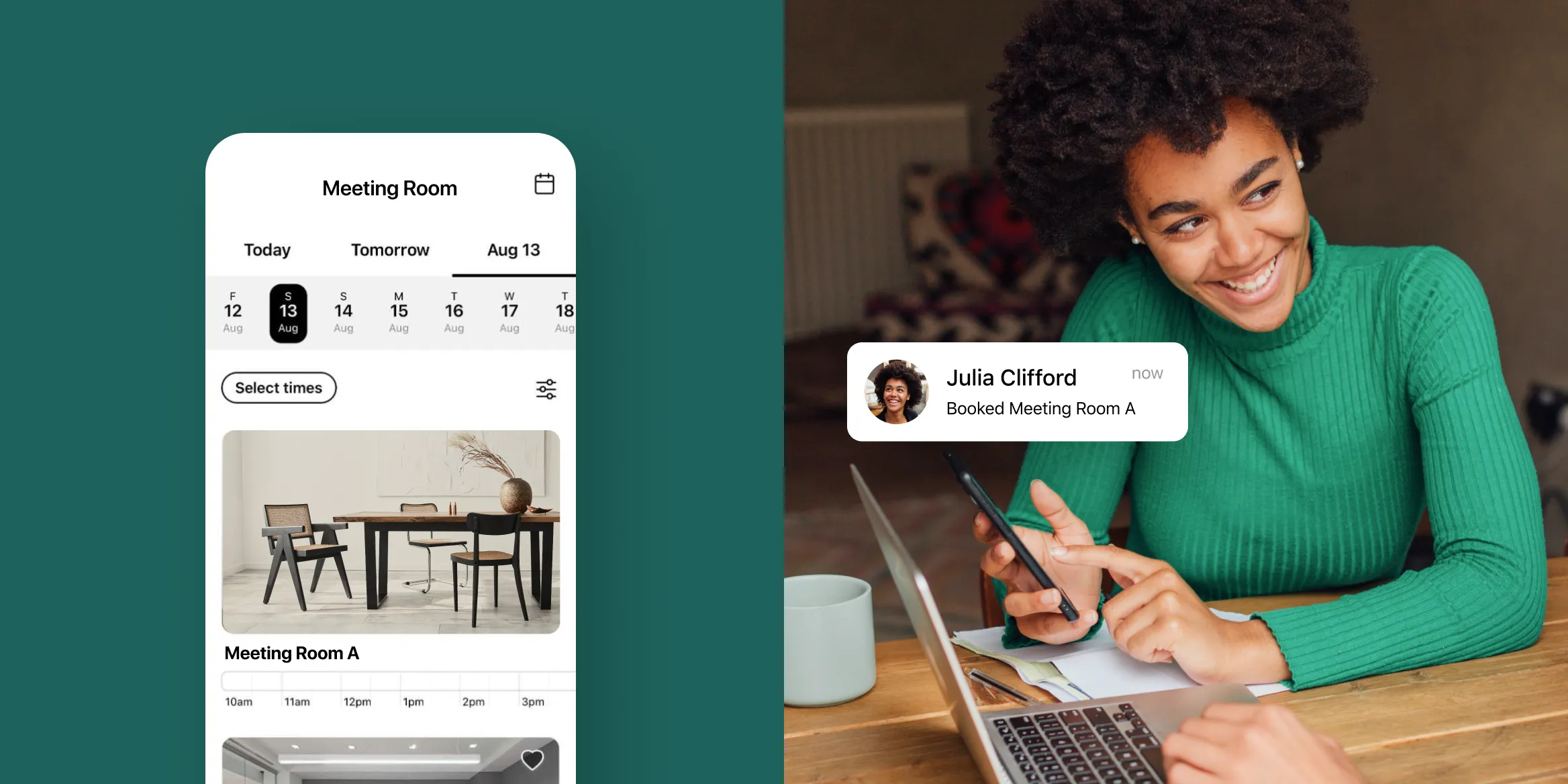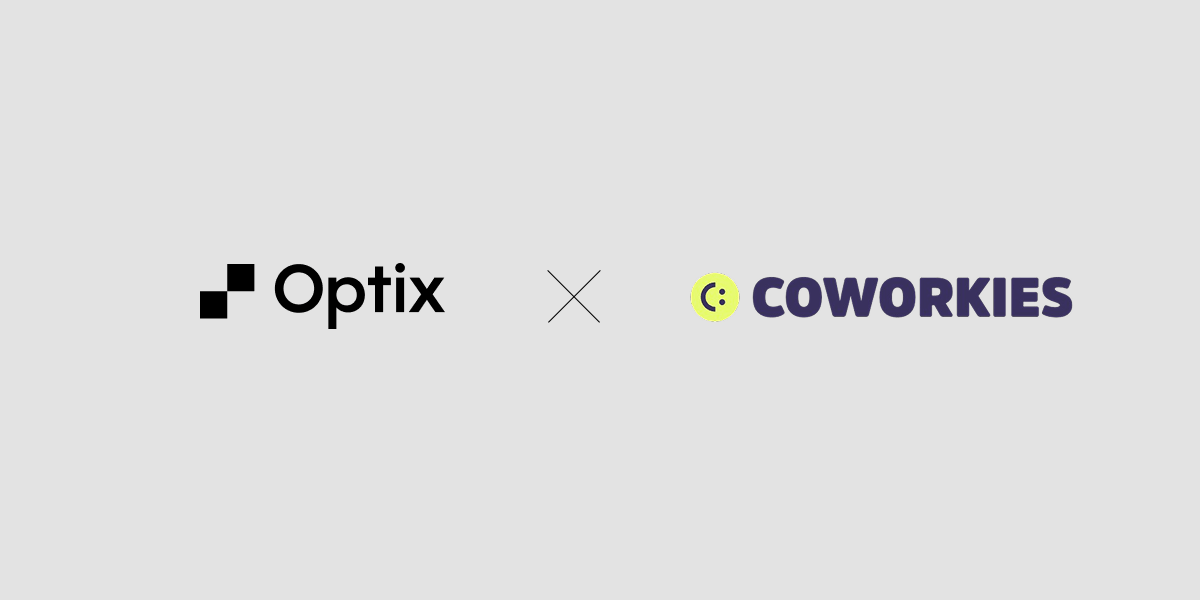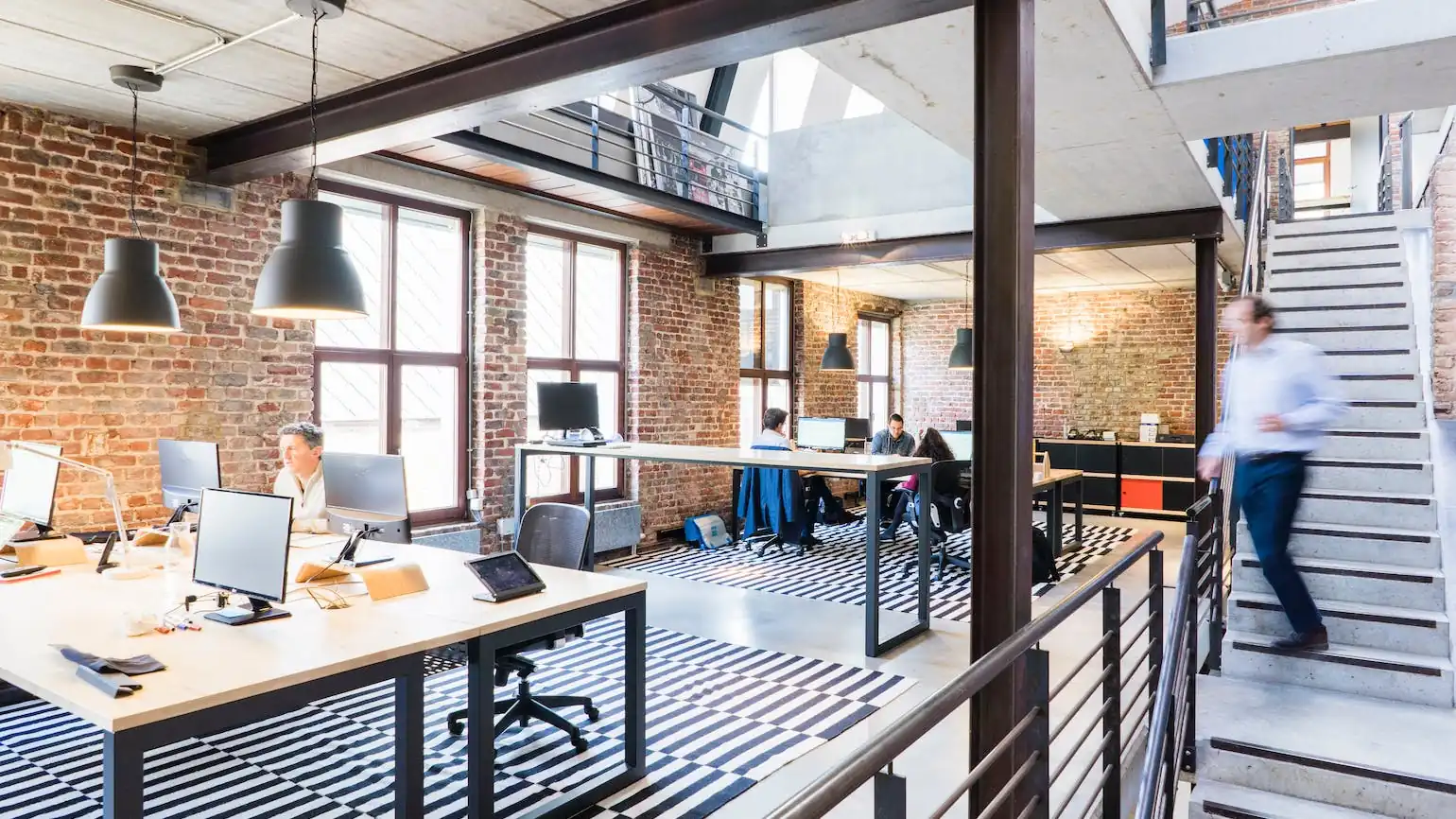
Picture this: you’ve just opened a new coworking space in a young, professional neighborhood.
Your members include a full-time teacher who is trying to get her side hustle off the ground after work, a freelance graphic designer who works best early in the morning, and a part-time creative who needs a workspace and a quiet place to build his photography business while his partner works from home.
What’s the best way to meet these varied needs? By creating a 24 hour coworking space.
When executed successfully, allowing 24/7 access in your coworking space can be a wonderful way to better serve your community, while differentiating yourself from other offerings in your area.
Before you jump in to opening up your space at all hours of the day, there are a few key things you’ll need to consider – including how members will access your space, what technology you’ll need to make it happen, and how you’ll keep your space secure.
Let’s unpack how to successfully provide 24 hour services when opening your coworking space.
What is a 24/7 coworking space?
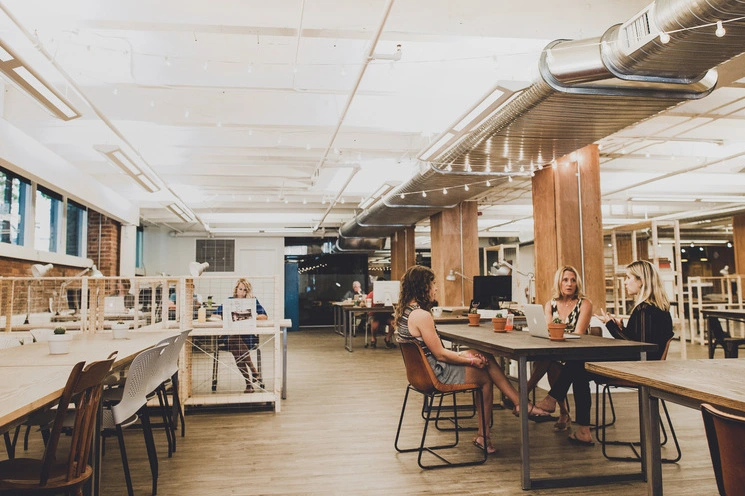
A 24/7 coworking space is a flexible workspace that is open to some or all members at any hour, day or night.
This could include access to meeting rooms, dedicated desks, phone booths, a private office, and more, whether it’s 3pm or 3am.
Types of 24 hour coworking spaces
In most flexible workspaces, 24/7 access is offered in one of four ways.
With a community manager on-site
In this scenario, the space is open and fully serviced at all hours of the day by an employee of your space.
This is not typical for many coworking spaces as the cost of manning a space 24 hours a day can jeopardize the profitability of most coworking spaces.
Without a community manager on-site
Here the office space is open at all hours of the day, but it is never monitored by a human.
This set-up describes most autonomous or automated coworking spaces, wherein members are able to physically access the office space, check-in, and pay for an invoice all from a coworking software of choice, such as Optix.
We’ve seen more of a push in recent years towards making spaces autonomous, in order to reduce business costs and free up the time and energy of operators.
This article we wrote for Coworking Resources covers how to create an autonomous coworking space.
Partially monitored
When a 24 hour coworking space is partially monitored, the entire space is open 24/7, but it is only monitored by community managers at certain times of the day, such as during regular 9 to 5 business hours.
In this case, usually only those with a full time membership can access the space at odd hours. When they do, there will not be on site support.
Partially opened
A partially opened coworking space includes some parts of the space with 24 hour access, such as private offices, while other areas, such as the lounge area, are not open after hours.
When our clients offer 24/7 access to their coworking spaces, we will usually see them do so with some combination of partially monitored and partially opened spaces.
The benefit here is that you can grant your trusted and thriving community members with long term commitments 24/7 access to your thriving community space and limit the access of drop-ins to regular business hours when there is a community manager there to offer on site support.
This set-up also ensures that not all amenities are able to be used freely by all members, thus improving the overall security of your space.
Benefits of operating a coworking space 24/7
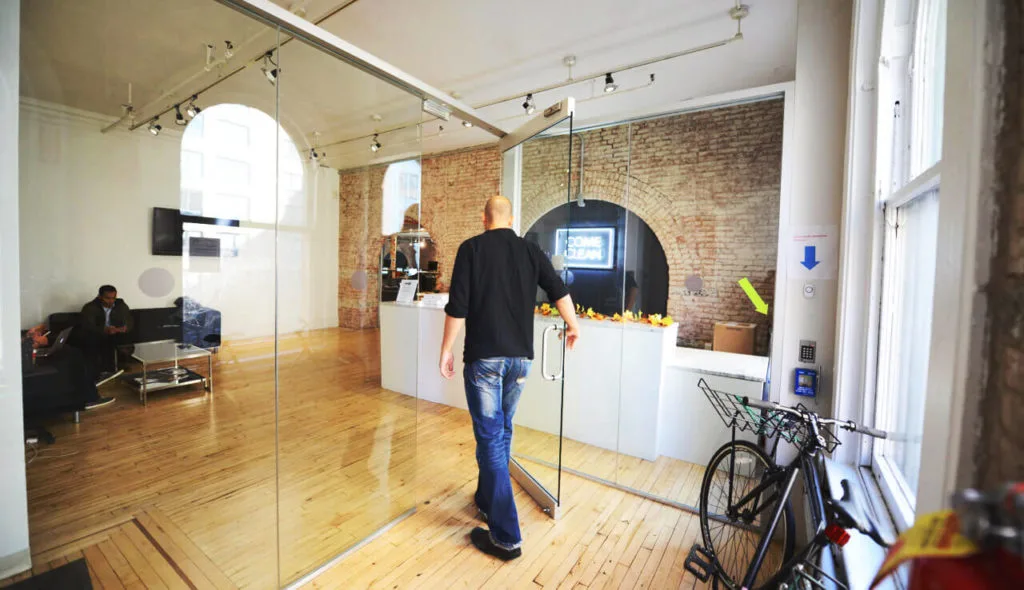
Allowing for 24/7 access to your coworking space means greater flexibility for your community. Considering how important flexibility is to those looking to join a coworking space, this is a great signal that you truly support the needs of your members.
There are many benefits to offering 24/7 coworking space access for you as an operator as well. This includes:
- Improved member retention: offering more flexibility, be it with the hours of your space or membership options, can make your space fit around your members’ needs better, thus improving member retention.
- Point of differentiation: having one of the only 24 hour coworking spaces in your area means you serve a demographic that no one else does, creating a point of differentiation and an opportunity to speak to unique amenities in your marketing efforts. It can be a major win if there is enough demand for your offering.
- Better user experience: creating an autonomous, always-on coworking space means you can satisfy your members’ coworking needs outside of traditional working hours, creating a better user experience overall.
- Greater revenue opportunities: the more hours your space is open, the higher you can charge for your services and the more revenue you can drive.
- Possibility of upselling membership options: having a partially open space and offering tiered membership plans with varying hours of access, gives you the opportunity to upsell memberships and drive more expansion revenue over time.
There are some potential risks to consider when it comes to operating an open access coworking space as well. By having your space accessible at odd hours, you’re opening yourself up to potentially more theft and crime, either from members or non-members.
There is also an increased risk of an emergency occurring that can not easily be attended to because it is late in the evening.
Later on, we’ll discuss how to mitigate these potential risks
Who uses 24 hour coworking spaces?
Not every target demographic will benefit from a midnight coworking sesh. Therefore, it’s important to think about your ideal client profile and who you’re trying to reach before committing to operating a 24/7 coworking space.
Some of the demographics we see that benefit the most from all access coworking spaces are:
- Remote workers working across multiple time zones, such as someone in Europe New working with New York based team members
- Entrepreneurs with full-time jobs who are looking for a place to grow their side hustle late into the evenings
- Professionals who travel frequently for work and may be on different time zones
One of the best ways to find out if your existing community would benefit from all access services is to conduct thorough market research via a coworking survey before incorporating it into your business model.
24 hour coworking membership plan examples
If you’re thinking of offering a coworking membership plan with a 24 hour offering, you may be wondering how to structure your plans.
Here is an example of a few different membership options that encourage upselling for 24 hour unlimited access.
- Daily drop in: $30/day, valid only from 8:00 am to 6:00 pm
- Bronze membership: $175/mo for 2 days a week each month, valid only from 8:00 am to 6:00 pm
- Silver membership: $225/mo for limited 24 access and a hot desk
- Gold membership: $375/mo for unlimited access 24 hours and a dedicated desk
The trick in pricing your offerings is to structure it so that it would be more appealing for someone to choose the 24 hour membership tier than to stay on their existing plan.
What should you keep accessible in a 24 hour coworking space?

Most coworking operators choose to keep part of their space open during late hours, and part of it closed. For example, meeting rooms may be locked and inaccessible whereas a dedicated desk could be accessed at any time.
Here are some different ways of looking at what you offer your community, including resources and amenities, and when. Note that there is no perfect way of structuring your plans – it really depends on what your community needs and what your level of comfort is.
Private office: private offices are often treated like an individually “leased” space. Therefore, most private offices allow for 24 hour access, even if the coworking space does not.
Meeting rooms: meeting rooms are typically locked by administrators during the evening for additional security purposed. Unless there is a large number of people visiting your space in the middle of the night, there is unlikely to be a need for members to book meeting rooms anyways.
Conference rooms: similar to meeting rooms, conference rooms are often locked after hours, unless otherwise requested by a member.
Phone booths: you may choose to keep your phone booths open during the evening depending on the style of phone booths you offer, especially if you have a large evening crowd (though they are unlikely to be needed).
Dedicated desk: because someone’s dedicated desk is typically in the open seating area, and they are renting it for free use similar to a private office, it should be available at any time of day.
Keep this in mind as you build out your access strategy.
Important aspects to consider with a 24/7 coworking space
Everyone has heard horror stories of things that can go awry in 24 hour businesses. With strong planning however, much of these potential issues can be mitigated.
Here are some big bucket items you’ll want to consider when opening a coworking space.
Security
By far, security is the number one priority when it comes to operating a 24/7 coworking space. You need to make sure that your space is secure and your community feels safe at any hour of the day.
You can do this by:
- Having cameras across the entirety of the inside and outside of your building
- Investing in a secured access control system like Kisi to help manage member access to your space
- Not allowing member guests in after hours
- Lock up all valuables before closing
- Have one single door for access after regular working hours
When it comes to security, you’ll also want to think about the level of access you offer to your members. We’ll often see our clients offer full-time members unlimited access after hours, whereas drop-in and day-pass members are only able to access the space during regular business hours.
Staffing
Deciding whether or not you will need and/or want some kind of staffing in your space after hours is critical. The level of staffing you choose will depend on the location that you’re in and the resources you have as a business owner and space.
Some spaces opt for an evening community manager who is on site at least partially into the evening to ensure the space is safe. Others have security guards that patrol the building outside late into the night.
If you have evening members whom you have a strong relationship with and you really trust, then you could consider making them honorary “evening neighborhood watch” guards.
Keep in mind that if you are in a location that requires increased levels of security and you can’t currently afford it, then you may want to consider limiting 24/7 space access to your most trusted team members until you’re able to provide the support you need.
Crisis management
If you are used to running your space with an operator on-site, then operating a 24-hour business brings with it a unique set of liabilities.
If something were to happen in the middle of the night, who would be the one to handle it? How do your members know who to contact, how, and for what kind of issue?
Thinking through how to manage a potential crisis in your space will help you feel more prepared for your future. Once you have a solid plan of action in place in case of crises, then you’ll want to communicate this clearly and effectively to your members.
Part of mitigating a crisis is ensuring your members understand exactly what to do if things go wrong. It can also help prevent any potential problems from happening before they even start.
As part of onboarding, explain the actions someone should take in the event of an emergency. Keep these actions posted in a public place and on their coworking software for easy reference.
Key coworking technology for 24/7 spaces
The best way to ensure your space is secure all hours of the day, even without a human on site, is with the help of technology. The right tools and platforms will ensure secured access at an affordable cost.
At the very least, we recommend the following tools:
- Door access control system: this allows members to access your space either with a fob, keycard, pin pad, or even their mobile phone. They integrate with your coworking software to help you keep track of who is using your space and when. Popular options for coworking spaces include Kisi and Salto.
- Integrated security cameras: security cameras will not only give you peace of mind that you can see what’s happening in your space, they also act as a powerful deterrent when it comes to preventing theft and crime. Set cameras up in high traffic communal areas (and avoid private offices unless explicitly requested).
- Membership software: as mentioned, coworking software like Optix will integrate with your access control system to give you complete oversight into who is in your space and when. With a robust integration, you’ll see every time a member checks into the space via your admin dashboard. Learn more about how Optix can help you manage your space.
On top of these, you may want to consider other methods of securing your space, such as by setting up a captive portal like IronWiFi to monitor WiFi usage.
How to create a 24/7 coworking space

Now that you understand the benefits of creating a 24/7 coworking space and important aspects to keep in mind, it’s time to explore how to go about creating one. Follow these steps to create a flexible coworking space that is open at any hour of the day.
Step 1: Decide on the level of access you’ll want to provide
Will your space be open 24/7 for all members? Will you have it be fully autonomous or would you prefer a staff member be present?
The first step is deciding what type of access you’ll want to provide to your members. If you’re not sure where to start, here are some important data points to consider:
- Who is your ideal client profile and what is it that they need?
- What is the cost of running your space 24/7 vs. the estimated potential revenue you can generate from the additional hours?
- What is your staffing budget?
Using this information, you can decide when you want to have 24/7 access available, at what location, what areas you want to make available, who you will allow in this space, and if any staff will be present during this time.
Step 2: Figure out your membership offerings and pricing
Balancing the cost of running your coworking space after hours and the potential revenue opportunity is integral to the financial health of your business.
If you are going to offer 24/7 space access, then you’ll want to consider how much you will charge your members. Some options are:
- 24/7 access for all members: a higher base cost for all membership plans
- 24/7 access for some members: a higher membership cost for only plans that include access to the space after hours
If the cost of running your space and the potential revenue opportunity is out of balance, then you’ll quickly find 24/7 access to be a hindrance to your overall business goals.
Step 3: Get the right tools
Once you land on the kind of 24/7 access you’re going to provide, then you’ll need to determine what resources you’ll need to provide it.
It’s possible that you have some of the resources you need set up already, like a door access control system or a management software.
Either way, it’s important to parse out exactly what you need and exactly what you have in order to make your space accessible after hours. This could be as simple as better lighting, more security cameras, or dividers to separate areas that are open and closed at various times of the day.
Step 4: Create house rules and an onboarding plan
Allowing members into your space after hours presents a unique set of challenges. You need to ensure your members know how to access the building and what to do in case of an emergency, especially if the space is unmanned.
You’ll also have to ensure there are no security concerns. Here are a few suggestions for how to mitigate these challenges.
- Create clear rules and processes around 24/7 access such as what to do if the security alarm goes off, what door to go in and out of, and what areas of the space can and can’t be used at what times. Have these printed and stored physically in the space, as well as a digital copy sent to all members. Here is a handy guide to creating coworking house rules.
- Consider conducting background checks or collecting security deposits from members who will be accessing the space after hours.
- Develop a clear and instructive onboarding process for new members that will be using the space 24/7. This is the best way to ensure they are well-prepared and informed on what to do in case of an emergency.
Clear expectations and well-defined processes will help you and your members manage any potential problems that could arise.
Make your coworking space more accessible with 24 hour access
Opening your coworking space up to 24/7 access can be tricky. There is a lot to consider in the process, from how you will keep the space secure to what technology you’ll need to deploy in order to make it happen.
However, the planning is sure to be worth it in the end. It’s a great tool to retain members and bring new ones into your truly flexible space.
Looking to learn more about coworking technology and how you can use it to operate a 24 hour coworking space? Check out our ultimate guide to coworking tech or connect with a member of the Optix team today.


